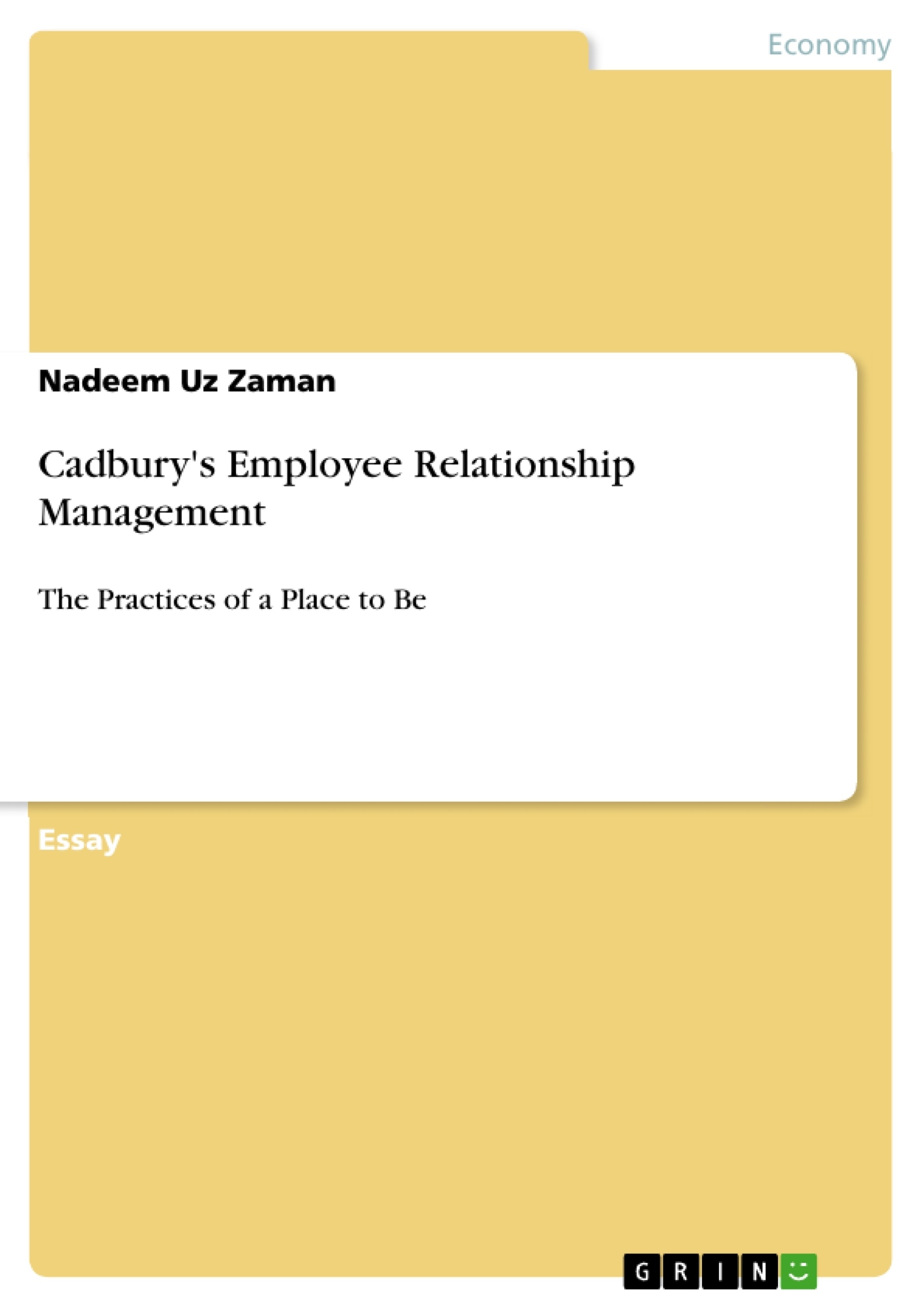Cadbury is known to be the birthplace of the modern employee relationship management for its care for the welfare of its workers. in fact, Cadbury treats its workers as the owners of the organization rather than its employees. This essay, thus, traces the historical practices of employee relationship management at Cadbury and discovers how those practices that make it 'the place to be' for its workers.
Inhaltsverzeichnis (Table of Contents)
- Introduction
- The Trade Union at Cadbury
- The level of Employees' Satisfaction with the Management
- Employee Involvement at Cadbury
- Employees with disabilities
- Employee communication
Zielsetzung und Themenschwerpunkte (Objectives and Key Themes)
This report examines the employee relationship management practices at Cadbury Schweppes PLC, a global organization renowned for its commitment to worker welfare and industrial relations. The report investigates how Cadbury's historical approach to employee relations has influenced its current practices, particularly in the context of employee involvement, satisfaction, and trade union engagement. The key themes explored in the report include:- Cadbury's historical foundation in employee relations and its pioneering role in developing modern industrial relations practices.
- The importance of employee satisfaction and motivation in achieving organizational success.
- The role of trade unions in employee relations, particularly in the context of Cadbury's unique history and the evolution of its management practices.
- Cadbury's commitment to employee involvement, including its initiatives to empower workers and provide them with opportunities for growth and development.
- The impact of Cadbury's social responsibility programs on employee relations and its overall reputation.
Zusammenfassung der Kapitel (Chapter Summaries)
Introduction
The introduction establishes Cadbury Schweppes PLC as a case study for examining employee relationships in a global context. It highlights Cadbury's historical significance in industrial relations and its reputation as a "dreamland for workers." The introduction defines key terms like "employee relations," "industrial relations," and "employee involvement" and outlines the report's focus on how Cadbury's practices embody both practical applications and theoretical frameworks.The Trade Union at Cadbury
This chapter delves into the evolution of trade unionism at Cadbury, highlighting the company's unique approach to worker relations. Cadbury's history of treating employees like family and prioritizing their welfare led to the establishment of a Works Counsel, a forum for discussion between management and workers. This chapter examines how Cadbury's commitment to employee welfare contributed to the eventual unionization of its workforce.The level of Employees' Satisfaction with the Management
This section examines the high levels of employee satisfaction at Cadbury. Through quotes from company officials and a description of the company's historical and ongoing efforts to improve worker welfare, the chapter highlights Cadbury's success in developing a culture of trust, motivation, and commitment among its employees.Employee Involvement at Cadbury
This chapter explores specific practices employed by Cadbury to foster employee involvement, including its approach to hiring and supporting employees with disabilities and its commitment to open communication. The chapter showcases how Cadbury's communication strategies and various social responsibility programs contribute to a sense of belonging and pride among its workforce.Schlüsselwörter (Keywords)
This report focuses on employee relations, industrial relations, employee involvement, trade unions, employee satisfaction, social responsibility, and the history of Cadbury Schweppes PLC. It examines the company's unique approach to worker relations, its commitment to employee welfare, and the impact of its practices on organizational success.
Final del extracto de 9 páginas
- subir
- Citar trabajo
- Professor Nadeem Uz Zaman (Autor), 2011, Cadbury's Employee Relationship Management, Múnich, GRIN Verlag, https://www.grin.com/document/178030
Leer eBook



